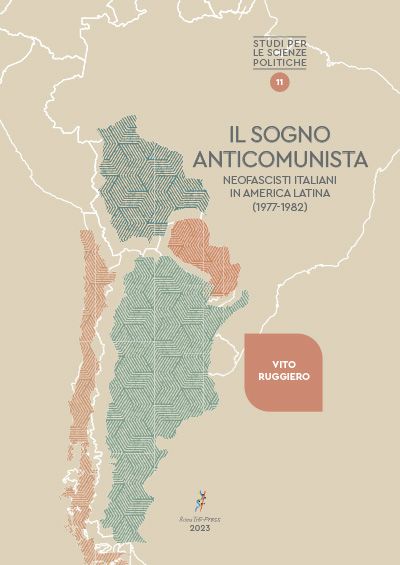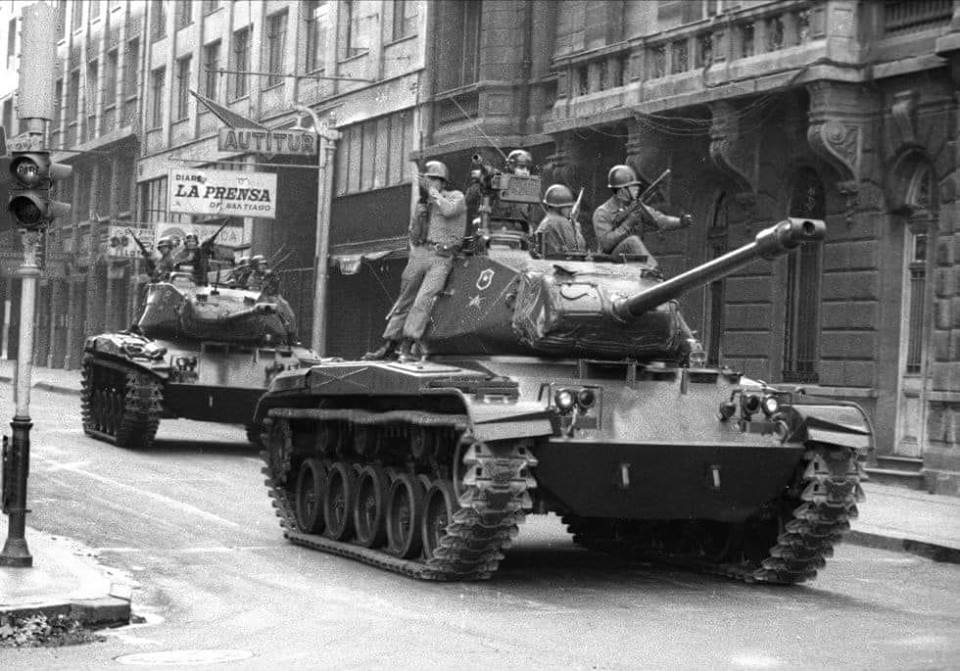This contribution is based on the author's newly published book The anti-communist dream. Italian neo-fascists in Latin America (Roma Tre Press, 2023).

After years of mainstreaming violent jihadist groups in the framework of the so-called Global War on Terror, the recent escalation of terrorist attacks linked to white suprematism has contributed to enlarging the analytical and political purchase of the fight against violent extremism. And while the objectives of different violent extremist groups vary considerably – to an extent that the notion of “conservative revolutions”, recently revamped, fails to fully capture – their modus operandi may exhibit striking similarities. Recently published historical evidence provides key insights into the transnational diffusion, structural constraints, tactics and contradictions of violent extremist groups, looking in particular at the diaspora of neo-fascists from Italy to Latin America.
In April 2023, the Court of Bologna presented the reasons for the sentence handed down last year in the so-called trial of the instigators of the massacre of August 2, 1980, in which the former neo-fascist militant Paolo Bellini was sentenced to life imprisonment. According to the court, he was the fourth person who physically carried out the massacre along with neo-fascists terrorists Francesca Mambro, Valerio Fioravanti and Luigi Ciavardini.
Unlike the others, Bellini did not come from the Nuclei Armati Rivoluzionari. He belonged to Avanguardia Nazionale, one of the main organizations of the so-called first generation of Italian neo-fascism and one of the main responsible of the so-called “strategy of tension”, a wave of terrorist attacks that bloodied Italy between 1969 and 1974. Wanted since 1976, Bellini managed to escape to Brazil, then ruled by an anti-communist military regime, where he was registered at the civil records office in Rio de Janeiro under the false name of Roberto Da Silva.
Despite its the importance in the trial, the presence of Italian neo-fascists in Latin America should not be surprising from a historical perspective, especially in those years. In fact, Bellini’s source organization was a non-secondary part of the transnational networks that operated in the subcontinent in the second half of the 1970s. Illustrating this, on March 12, 2021, Bolivia's Truth Commission, established in 2016, delivered to President Luís Arce Gómez the final report on the human rights violations and forced disappearances that occurred in the country between 1964 and 1982. In addition to reconstructing the events of four dictatorial cycles, the Bolivian commission was the only one among Latin American commissions to acknowledge the presence in the country of Italian paramilitaries who, on behalf of the Argentine regime, held influential positions during the dictatorship of Luis García Meza Tejada, which tore the country between 1980 and 1981. According to the Truth Commission, as well as Italian and US intelligence, the paramilitaries contributed to the management of the repressive campaigns, making extensive use of counterinsurgency techniques, torture and forced disappearances. At the same time, the Italians were tasked with running the drug trafficking business, which was the main source of funding for the dictatorship. These people were not mere mercenaries but they came, again, from the Italian leading neo-fascist organizations, mostly Avanguardia Nazionale.
As stated by the Truth commission, the Bolivian case is the last leg of a quite a long journey that, not without problems, brought a group of neo-fascists militants from Italian streets to the top of a Latin American dictatorship. The path started in October 1975, when Augusto Pinochet ordered the neo-fascists to assassinate the Christian Democrat opponent Bernardo Leighton, exiled in Rome since 1974. The relationship built as a result of this event represented the gateway for neo-fascists to enter Latin America which, in that historical phase, represented the new focal point for radical and global anti-communism. The consolidation of military dictatorships on the Latin American continent collided with the demise of authoritarian regimes in the Mediterranean, which had previously been the main landing place for anti-communist militants, mostly neo-fascists, from neighboring countries and beyond. After the fall of the Greek and Portuguese authoritarian regimes, the death of Francisco Franco in 1975 destroyed the last sanctuary of the radical right in Europe. The new juncture led the various anticommunist groups living in hiding to turn their attention overseas, where the coexistence of military regimes built on the same theoretical foundations had created an unprecedented space of circulation in which rules and methods of countering communism, rejected by most of the countries belonging to the Western bloc, were in force. They were the years of the infamous Doctrina de Seguridad Nacional (National Security Doctrine, NSD). It was a theory that included military, geopolitical and economic notions which aimed to define a defensive strategy against the advance of guerrilla and democratic movements on the continent. A direct product of the Cold War, which, on the one hand, systematized internal repression and, on the other, embraced neo-liberalism and recognized Washington's leadership in the fight against international communism. The spread of NSD led — starting from 1964 in Brazil — to a series of coups which put the greater part of the continent under military rule. Once in power, these regimes launched vicious campaigns of repression against any form of dissent: roundups of opponents, arbitrary arrests, torture, imprisonment in concentration camps, and forced "disappearances".
How is it possible that a group of Italian terrorists could be integrated into the repressive apparatuses of military governments on the other side of the world? This is a very complex question, even leaving aside decades of scholarly debate on the admissibility of the category "Fascism" to refer to the last Latin American military dictatorships (which, by the way, is still ongoing). In short, the encounter between Latin American dictatorships and Italian neo-fascism was the result of a convergence of interests in the global scenario of the Cold War. On the one hand, Italian terrorists needed new institutional allies who could offer them protection after the change in national and European equilibria. On the other hand, from the mid-1970s on, the military juntas in Latin America needed "qualified personnel” not directly linked to the regimes to carry out risky operations abroad, such as the Bernardo Leighton attack or supporting the Bolivian regime in 1980. This collaboration was facilitated by the spread in both Europe and Latin America of the French “Revolutionary War” doctrine, which had become dominant in radical anti-communist circles worldwide since the 1960s. This theory had its origins in the thesis of the Cité Catholique, the traditionalist organization founded by Jean Ousset in 1946, and spread in Atlanticist circles - eliminating the purely religious aspects - beginning in 1961. It argued that it was necessary to counter by all means, including violence and terrorism, the advance of international communism, which, by infiltrating its agents into every crevice of the system, was eroding society from within and preparing the ground for the final blow and destruction of the Christian West. In a nutshell, the doctrine of “Revolutionary War” added political and conspiratorial elements typical of the Cold War to the military theory of counterinsurgency.
In any case, it is not possible to consider the neo-fascist migration to Latin America as a single, linear phenomenon. The relationship between terrorists and military dictatorships had very different features, depending on the political needs of each regime. The Italian terrorists operated to the service of already established systems whose structures were not affected by the formers’ influence, at least from the point of view of political elaboration. In Latin America, the neo-fascists merely carried out the orders of the leaderships of the regimes that constituted their institutional reference points from time to time. Moreover, their trajectory across the continent was strongly influenced by the hemispheric political dynamics, which were very turbulent in the second half of the 1970s. Just think about the fresh harshening of tensions between Chile and Argentina (both interlocutors of Italian neo-fascists) in 1977, as these states again claimed the sovereignty over the Beagle Channel, at the southernmost tip of the continent. This conflict was also used by other states to dust off old grievances against both countries. Vatican mediation avoided direct conflict, but the military dictatorships’ diplomatic relations were irreparably compromised.
In conclusion, the relations between Latin American military regimes and Italian neo-fascism show how, during the Cold War, radical anti-communism and the legitimization of terrorism as a political tool, as well as knowledge of counterinsurgency techniques, have allowed the meeting of actors who were geographically and politically distant from each other. At the same time, an accurate understanding of the phenomenon cannot be detached from consideration of continental dynamics and, above all, national interest, which in the late 1970s no longer had the eradication of communism as its top priority.

